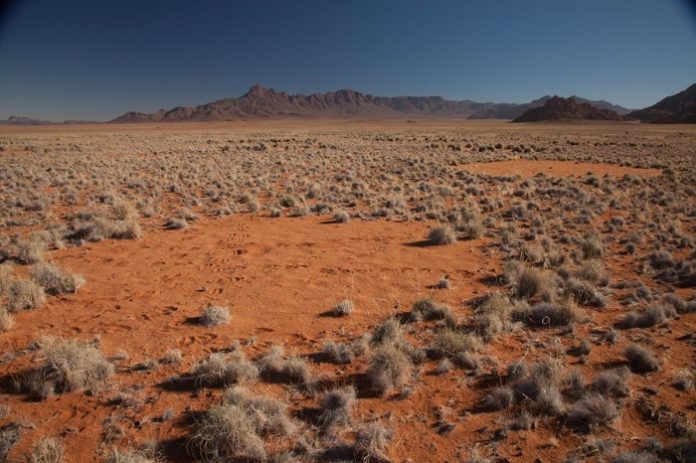
The ‘Fairy Circles’ of Namibia, one of nature’s biggest puzzles, may have finally been solved by scientists from the University of Strathclyde and Princeton University.
These are strange round patches of bare earth, surrounded by grass, that are scattered across the Namib desert.
They make a pattern almost like a honeycomb, and scientists have been scratching their heads about what causes them for decades.
In a recent study published in the science journal Nature, the researchers propose a new explanation. They think that termites and plants are working together to create these stunning patterns.
People have been fascinated by the Fairy Circles in Namibia since the 1970s. Some scientists believed that termites were the architects, destroying plants to minimize competition for water. Others thought that it was all about rainfall and plant rivalry.
The latest study, however, says it’s a combination of both. It suggests that termites and plants are interacting and helping each other survive in the harsh desert environment.
Dr. Juan Bonachela from the University of Strathclyde explains that the old theories weren’t necessarily wrong – they were just looking at half of the picture.
According to him, termites clear the vegetation on their mounds to keep the area moist. This is super important for the bugs’ survival in the arid desert.
The cleared area forms a bare disk, and that’s the start of a Fairy Circle. Then, plants around the mound use the extra moisture to grow, forming the grassy ring around the disk. This pattern repeats over and over as different termite colonies compete with each other.
This behavior doesn’t just make pretty patterns; it helps the entire ecosystem. With the help of termites, the environment can withstand tough conditions and bounce back from droughts much quicker.
The Fairy Circles are a beautiful example of how interconnected our ecosystems are, reminding us of the delicate balance needed for survival.
This breakthrough was achieved through international collaboration between scholars at Princeton and Strathclyde. They pooled their different skills to develop and test this theory. They used data from four different continents and ran computer simulations.
The simulations let them explore their theory on various scales and under different environmental conditions.
This would’ve been almost impossible to do in the field because of cost and time constraints. Isn’t science amazing?



